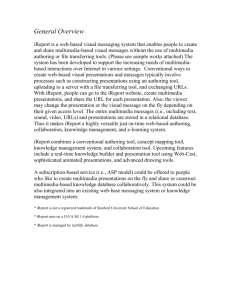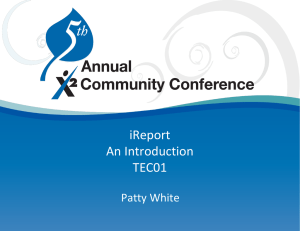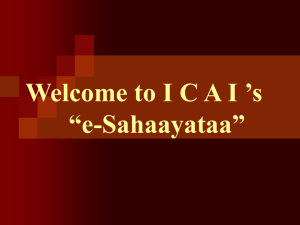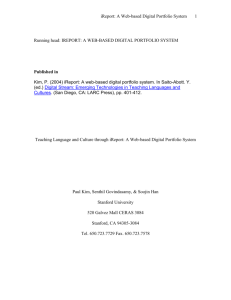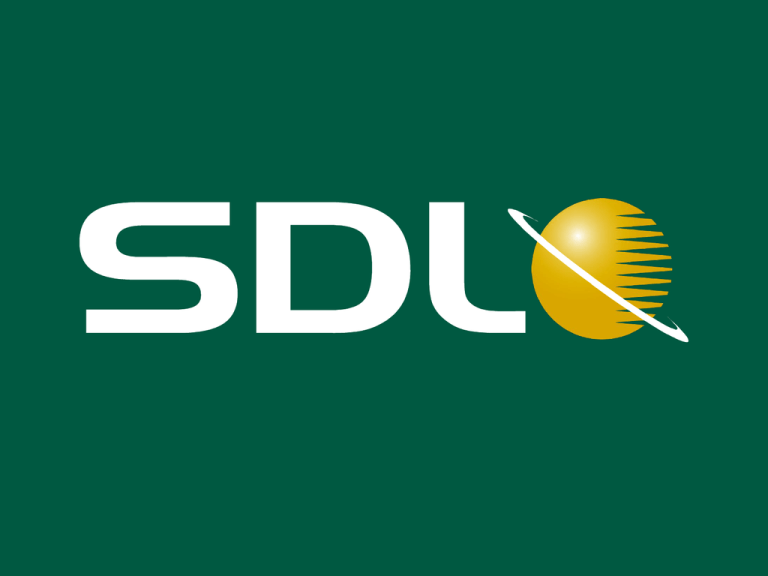
Jaspersoft/ iReport Migration
Part 1: Basics
Type presentation name here in slide master
© 2007 SDL. Company Confidential. Forward-looking information is based upon multiple
assumptions and uncertainties and does not necessarily represent the company’s outlook.
Topics Covered
Prerequisites
Report Center in WS10.1
Out of the box reports
Basic iReport Concepts
Create Query
iReport and Report Wizard
Properties
Fields
Palette
Prerequisites
There is no tool that will take the old version of the report
files and convert them to the new version
“Migrating” the report to the new version of Jaspersoft and
of World Server 10.1 requires that the report be recreated
using the new tools
The query used in the old .RLD version is the one aspect of the old report
that can be mostly carried over to the new version of the report.
Everything else needs to be recreated
Prerequisites
Install WorldServer 10.1
\\bos-data1\Data\builds\10.1.0\10.1.0.208\doc\en\WorldServer v10.1.0
Install Guide.pdf
Install Japsersoft Repository and iReport
\\bos-data1\Data\builds\10.1.0\10.1.0.208\doc\en\WorldServer v10.1.0
Install Guide.pdf
• Chapter 3 Report Center
– Follow instructions for the type of database World Server is installed over
Install iReport (if custom Report development or debugging is required)
Download from http://jasperforge.org/projects/ireport and install
Read the iReport Ultimate Guide 3!
\\BOSDATA1\Data\Dept_share\Engineering\3rd_party_tool\Jasper4.0\Docs\iRe
port-Ultimate-Guide-3.pdf
Report Center in World Server10.1
After the install the Report Center becomes available in
WorldServer
To Access go to “Tools ->Report Center”
If everything is properly configured you should see the
Report Center and the Out of the Box Report
Report Query
The query for the report is the most important aspect of the
report.
If a query from an old version of a report already exists
Open database tool that allows you to run a query against the World
Server database
Remove any old parameter references
• Replace old parameters with 1=1
• Save a version of the query with parameters intact for later
Verify the query returns the proper data for your report
• Verify calculations are correct for data
• In database tool change 1=1 to actual SQL statements
– Example localename in (‘German’)
• Verify correct data is returned
Take version with 1=1 open iReport
• This is the version that will be initially used to create the report
Report Query Part 2
If a new query for a new report
Open database tool that allows you to run a query against the
WorldServer database
Write query against WorldServer database to return the proper values for
the report
Add in sql statements to test what will end up being the parameters for
the query
• where localename in (‘German’)
When query is correct change statements for the parameters to 1=1 to
run query
Take version with 1=1 open iReport
• This is the version that will be initially used to create the report
iReport
Open iReport
Configure the connection to the Report Repository
Create a datasource in iReport for the WorldServer
installation
Open report wizard
File -> New
At completion of wizard JRXML file is created this file
contains
All layout information
Report Query
Variables
Parameters
JRXML will be compiled to .JASPER file
Report Inspector and Properties
While in a report the Report Inspector will appear on the left
side of the screen
This shows all the pieces of the report
Clicking on a piece of the report will show a properties panel on the right
side of the screen
• This properties panel lets you change and control how the pieces of the report
behave
As report configuration continues and more pieces are added to the
report the Report Inspector makes modifying or selecting only the pieces
you want easier
Fields
Fields are the pieces of the report that come from the query
Fields are of a certain datatype
Data types are important for using fields in variables
• When using the report wizard iReport will attempt to extract the fields from the query
• Based on the column type in the datasource iReport will attempt to pick the best data type
for the field.
• You can change the data type in the properties panel for that field
For the most part the Fields are what will be displayed in
the report
In iReport a Field is signified by $F{} where what is in the {}
is the name of the field
Palette
The Palette allows the user to drag and drop various items
into the report
These items are used to modify the look and the feel of the
report to make the final product easier to look at for the end
user
SQL Syntax Changes
When migrating the query from an old report to a new
report it is important to know that the syntax for how
Parameters are used in the query for an IN statement has
changed
Old version of an IN statement using a Parameter
1=1 {param.locale("and archiveProjects.localeName IN ('", "')", "', '")}
New version of an IN statement using a Parameter
$X{IN,archiveProjects.localeName,locale}
Both version will end up being replaced with
archiveProjects.localeName in (<List of values in locale Parameter>)
Questions?
Type presentation name here in slide master
© 2007 SDL. Company Confidential. Forward-looking information is based upon multiple
assumptions and uncertainties and does not necessarily represent the company’s outlook.
Copyright © 2007 SDL. All rights reserved.
SDL and the SDL Logo are trademarks or registered trademarks of SDL or its affiliates in the U.S. and other countries. Other names may be
trademarks of their respective owners.
This document is provided for informational purposes only and is not intended as advertising. All warranties relating to the information in this
document, either express or implied, are disclaimed to the maximum extent allowed by law. The information in this document is subject to change
without notice.
This slide is for closing external
and customer presentations
Thank you
Robert Spence
For more information or for any issues please contact
worldserversupport@sdl.com
Type presentation name here in slide master
© 2007 SDL. Company Confidential. Forward-looking information is based upon multiple
assumptions and uncertainties and does not necessarily represent the company’s outlook.



